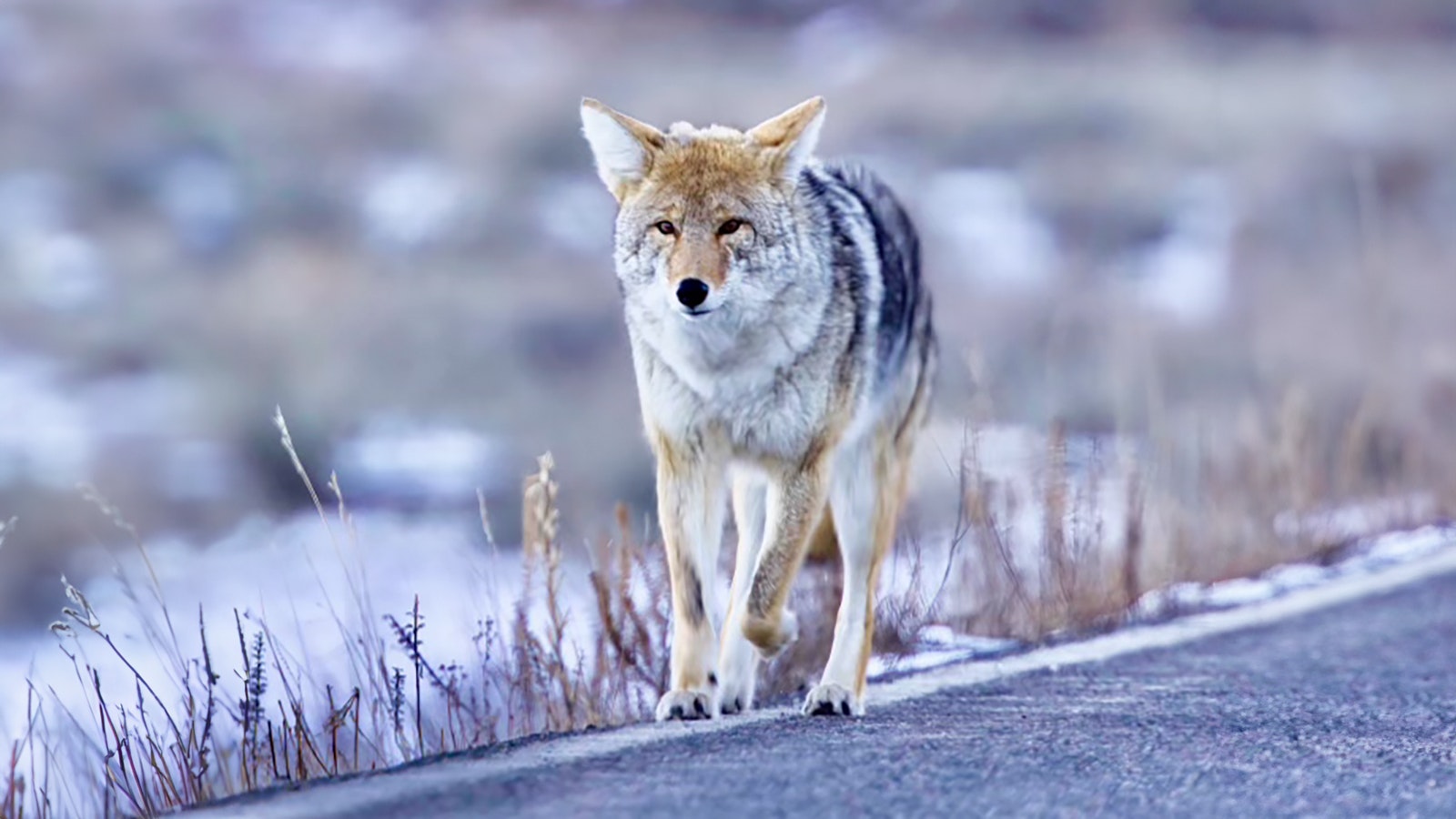As Yellowstone National Park gears up for its forthcoming peak season, one of its best-known grifters — Limpy the coyote — is at it again.
And he’s starting to bring friends along.
Limpy, also known as Tripod, is a coyote that frequents the roadside in the Lamar Valley area. He has an old leg injury, but he greatly exaggerates his limp and makes sad eyes at people in passing vehicles, hoping to score snacks. He’s become a pro at it.
And lately, other coyotes have been picking up on the scam and following Limpy’s lead, wildlife photographer Isabella Smedley told Cowboy State Daily.
“Coyotes are smart, and people are stupid,” she said.
Feeding wildlife is strictly forbidden in Yellowstone, and it’s bad for the animals, she said. So, while the acting talents of Limpy and his understudies might be impressive, she’d like to see it stop.
Smedley said she recently “drove up behind somebody throwing food out their car for Limpy, so I scared him away. Unfortunately, I wasn’t able to get video of the car’s license plate that time, to turn them in. Limpy really good at his job. He’s got a master’s degree in begging.”
Feeding Coyotes Can Get Them Killed
Smedley said she and other wildlife photographers are concerned about the welfare of Limpy and the park’s other coyotes. The begging routine draws them to the road, where they might get hit or run over.
What’s more, if coyotes get used to handouts, it will dull their natural hunting and scavenging skills. So, they might starve during the off-season when there aren’t crowds of tourists to sucker for food, she said.
The National Park Service has been posting more signs warning people to stay at least 25 yards from “habituated coyotes,” Smedley said.
But park rangers can be spread thin, so the public should pitch in to help break the coyotes’ bad habits, which are really the fault of people ignoring the rules, she said.
“I take videos all the time of license plates, and I turn people in all the time,” she said. “If people who love the park get serious about turning people in for feeding coyotes, we can get a handle on it.”

$5,000 Fine, Jail Time For Feeding
When coyotes get conditioned to handouts and lose their fear of people, it can get them killed, Park Service spokeswoman Linda Veress told Cowboy State Daily.
There are reports of people feeding wildlife all over Yellowstone, she said.
“Occasionally people do feed wildlife, or visitors leave food out and easily accessible for animals to get,” Veress said. “Animals that become dependent on human food may become aggressive toward people and may have to be killed. Visitors are reminded to keep all food, garbage, or other smelly items packed away when not in use.”
Park rangers didn’t have to kill any coyotes over the winter, she said, but they have investigated reports of some critters getting too comfortable around people.
“Law enforcement rangers are following up on instances of potential coyote habituation that occurred this winter,” Veress said.
“Once a coyote has been food-conditioned, they become less fearful of humans. They can display aggressive behavior and may bite. Once this occurs, coyotes are almost always killed. Attempts to haze, or trap and relocate them tend to be unsuccessful at stopping the aggressive behavior,” she added.
The maximum penalty for feeding wildlife in Yellowstone is a $5,000 fine and six months in jail.
Hopes He Learns Better Ways
Smedley said she enjoys seeing Limpy whenever she visits Yellowstone, but she wishes he’d learn to survive only on his natural skills.
“He knows how to hunt and find food on his own. Even with his leg injury, he looks good and he can move very quickly,” she said.
That hasn’t stopped him from trying his begging routine, even on Smedley, who flatly refuses to cave to his pathetic act.
“If I stop my van, he will stop by me. If I move forward, he will follow me forward,” she said. “Those eyes, he really knows how to make them look sad.”
Mark Heinz can be reached at mark@cowboystatedaily.com.





